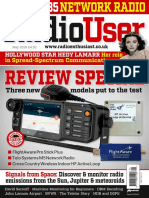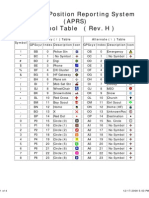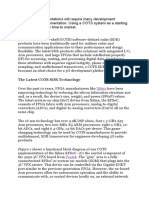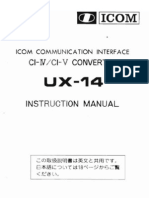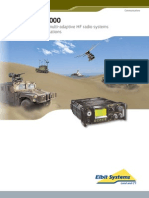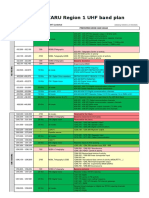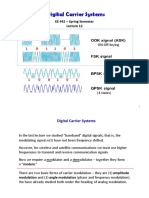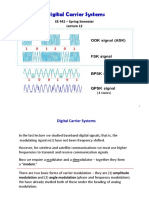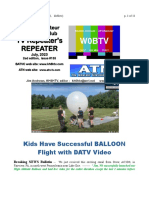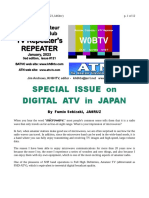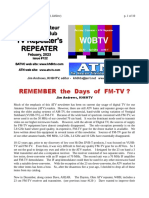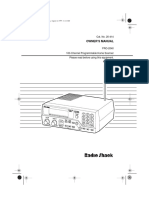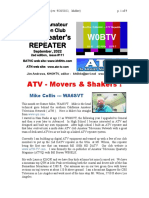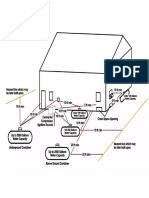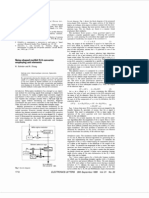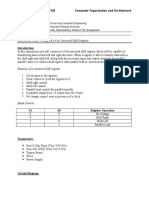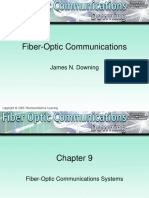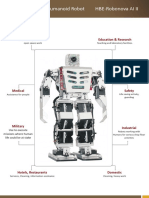0% found this document useful (0 votes)
200 views22 pagesDigital Modes Overview
This document provides a high-level overview of several amateur digital modes, including BPSK31, RTTY, Packet, APRS, and Winlink 2000. It discusses the minimum equipment needed, including a computer with a sound card, radio with VHF and/or HF capabilities, interface, and software. Various digital modes and interfaces are described, along with tips on operating digital modes with low audio levels to avoid interference. Resources like the ARRL and Wikipedia are also listed for further information.
Uploaded by
Benjamin DoverCopyright
© © All Rights Reserved
We take content rights seriously. If you suspect this is your content, claim it here.
Available Formats
Download as PDF, TXT or read online on Scribd
0% found this document useful (0 votes)
200 views22 pagesDigital Modes Overview
This document provides a high-level overview of several amateur digital modes, including BPSK31, RTTY, Packet, APRS, and Winlink 2000. It discusses the minimum equipment needed, including a computer with a sound card, radio with VHF and/or HF capabilities, interface, and software. Various digital modes and interfaces are described, along with tips on operating digital modes with low audio levels to avoid interference. Resources like the ARRL and Wikipedia are also listed for further information.
Uploaded by
Benjamin DoverCopyright
© © All Rights Reserved
We take content rights seriously. If you suspect this is your content, claim it here.
Available Formats
Download as PDF, TXT or read online on Scribd
/ 22







